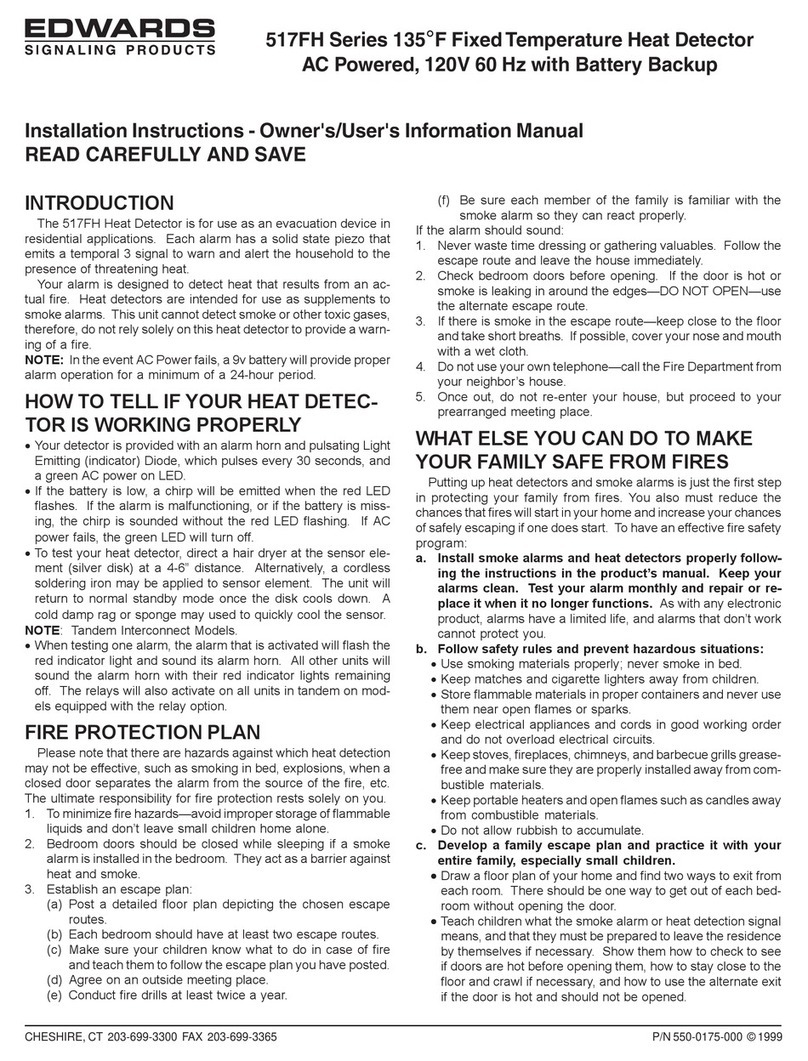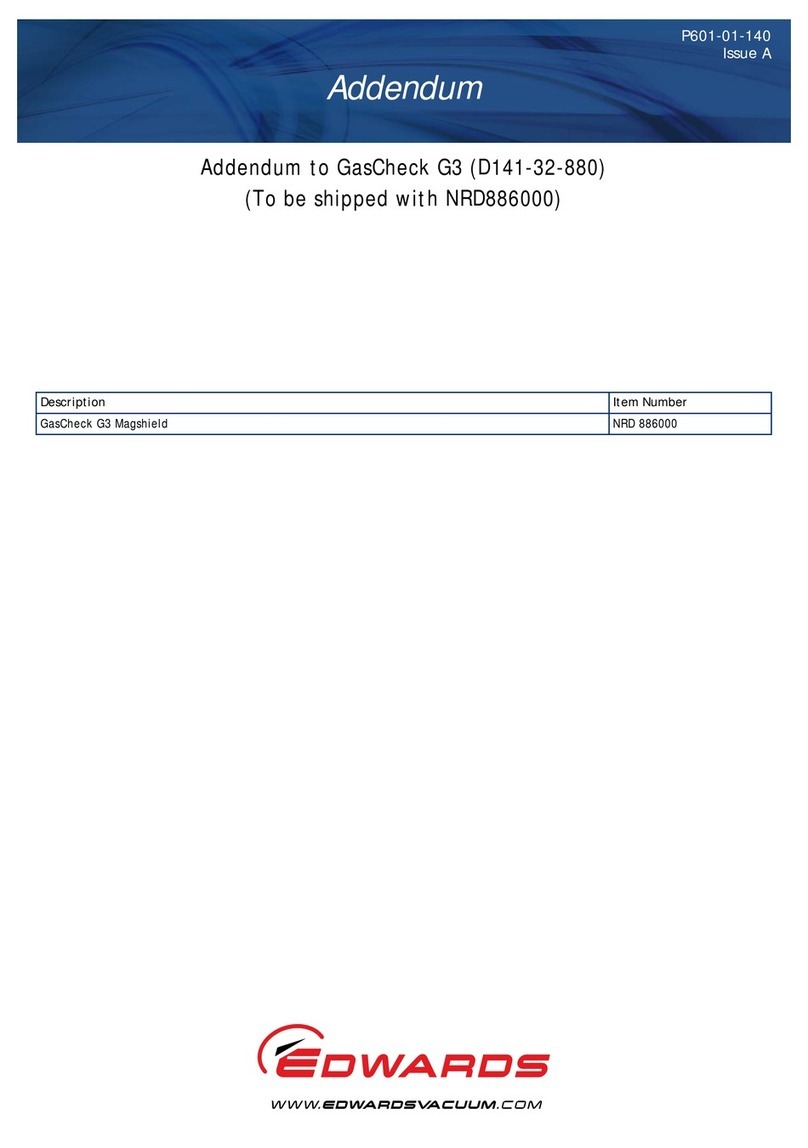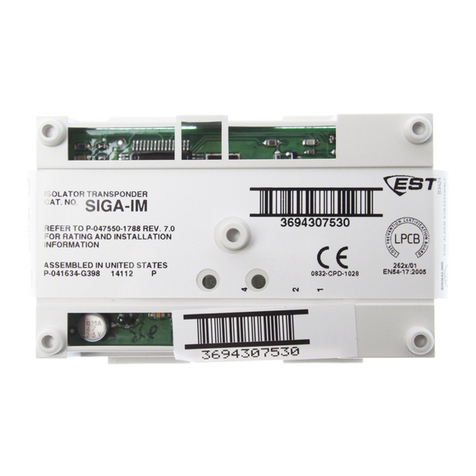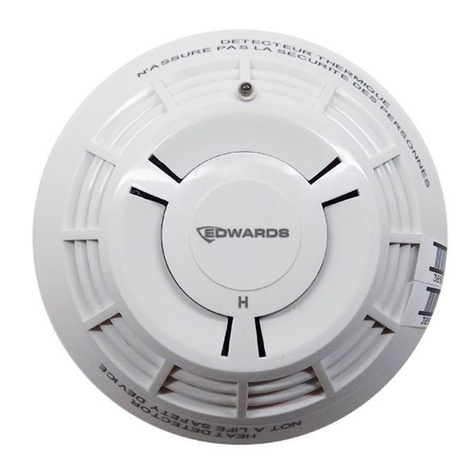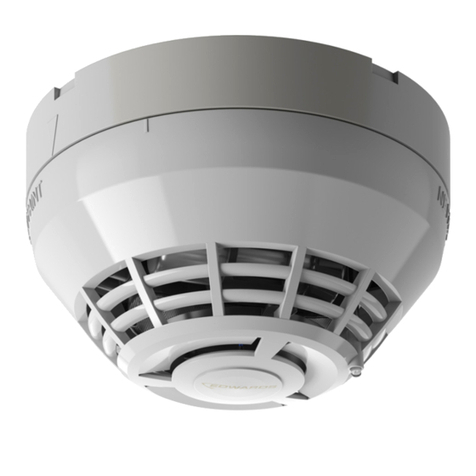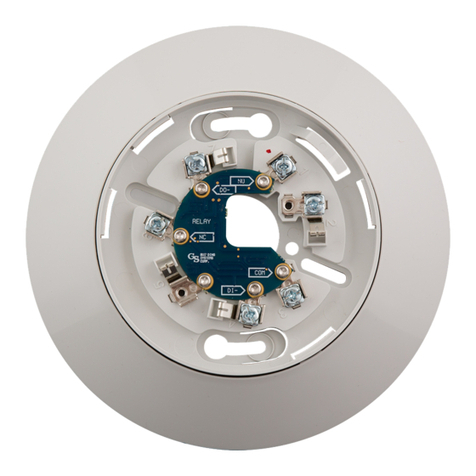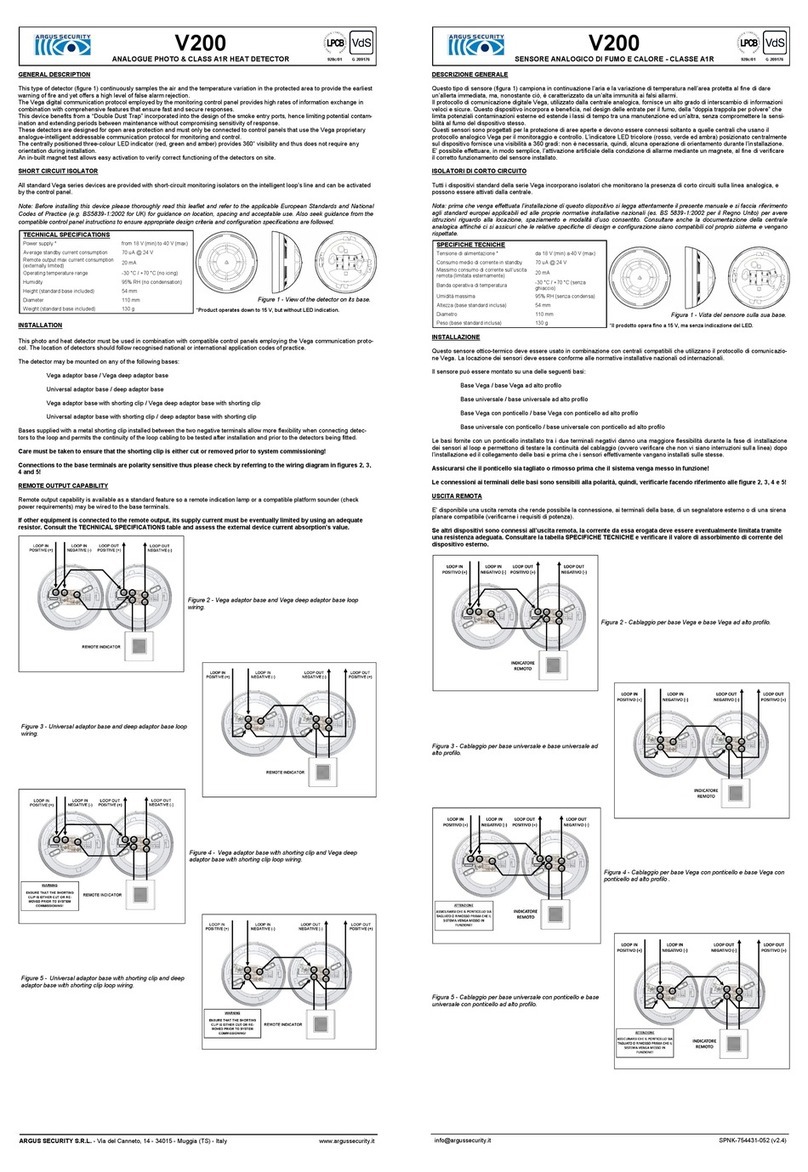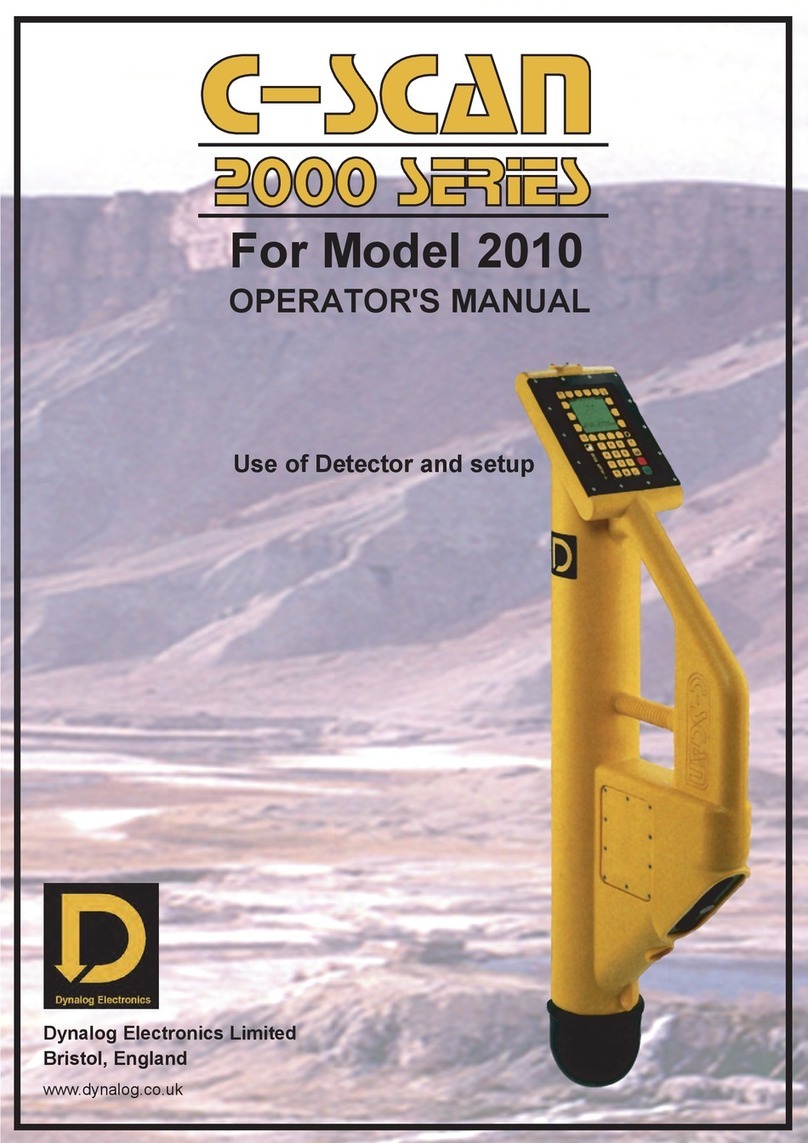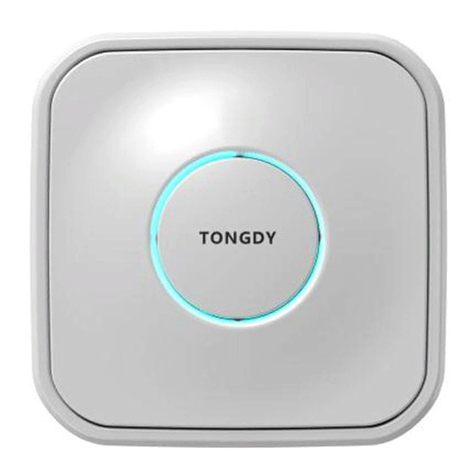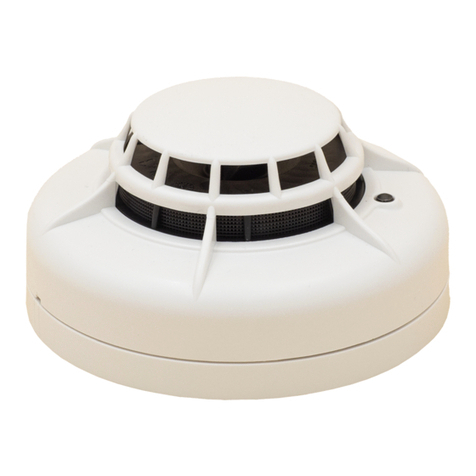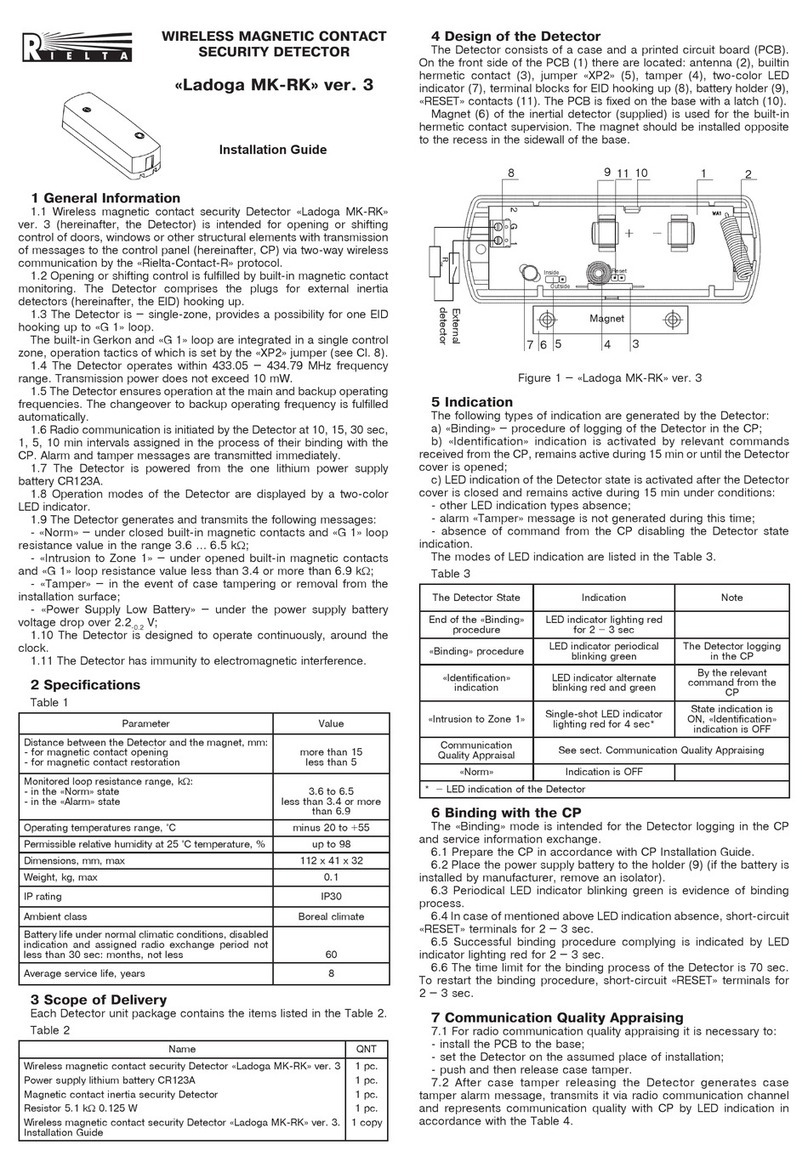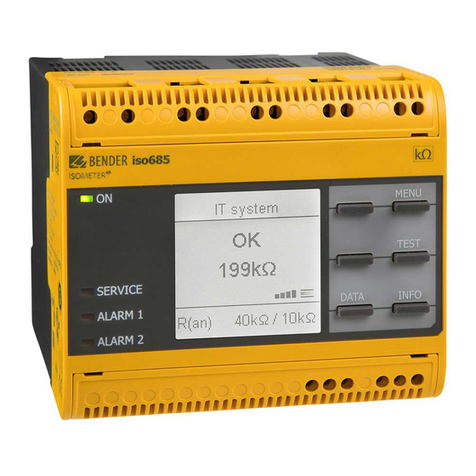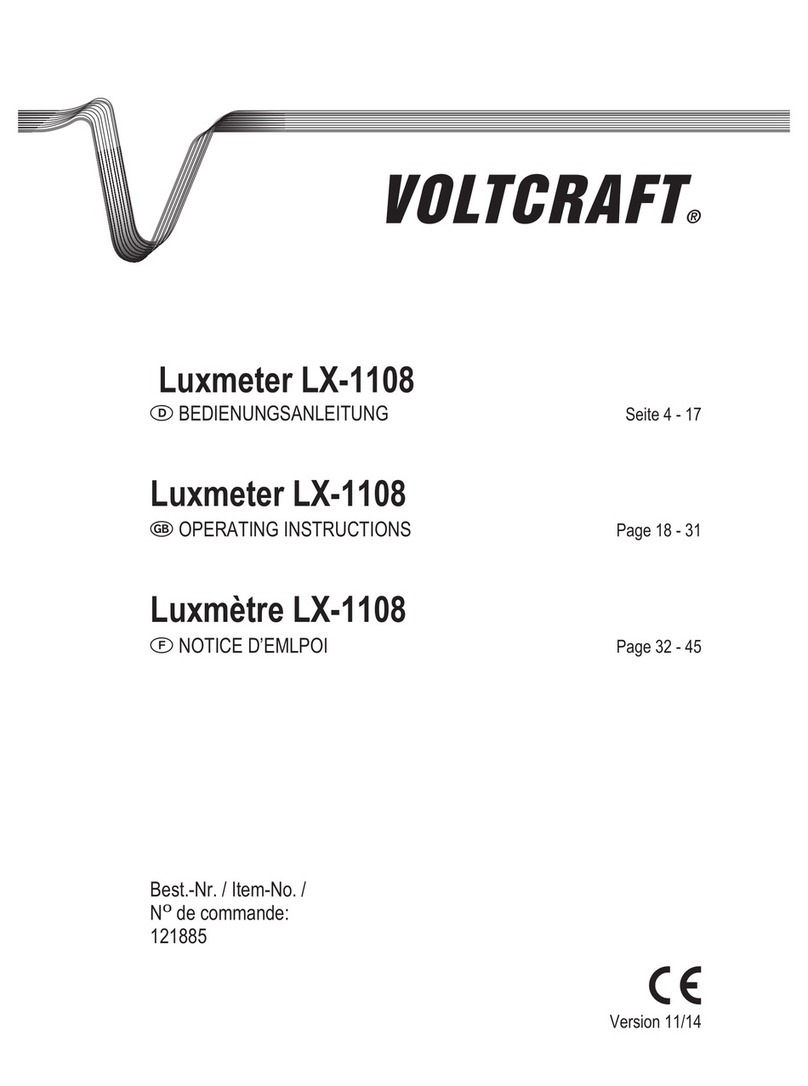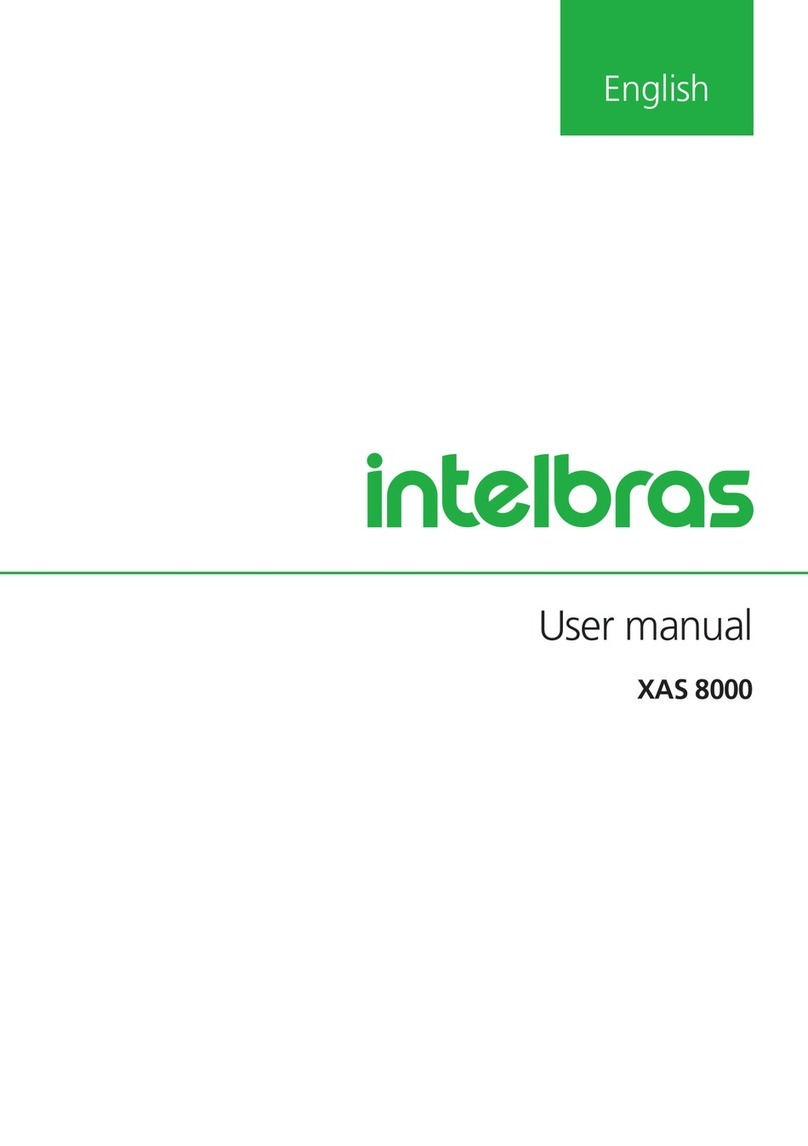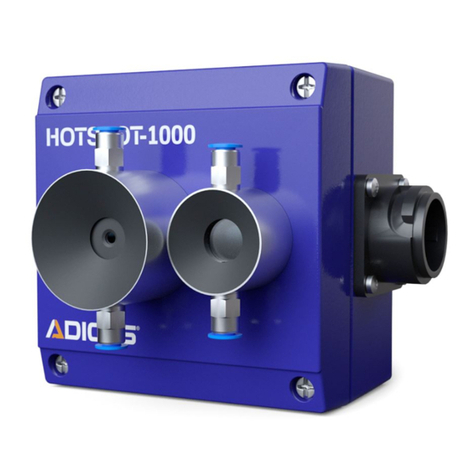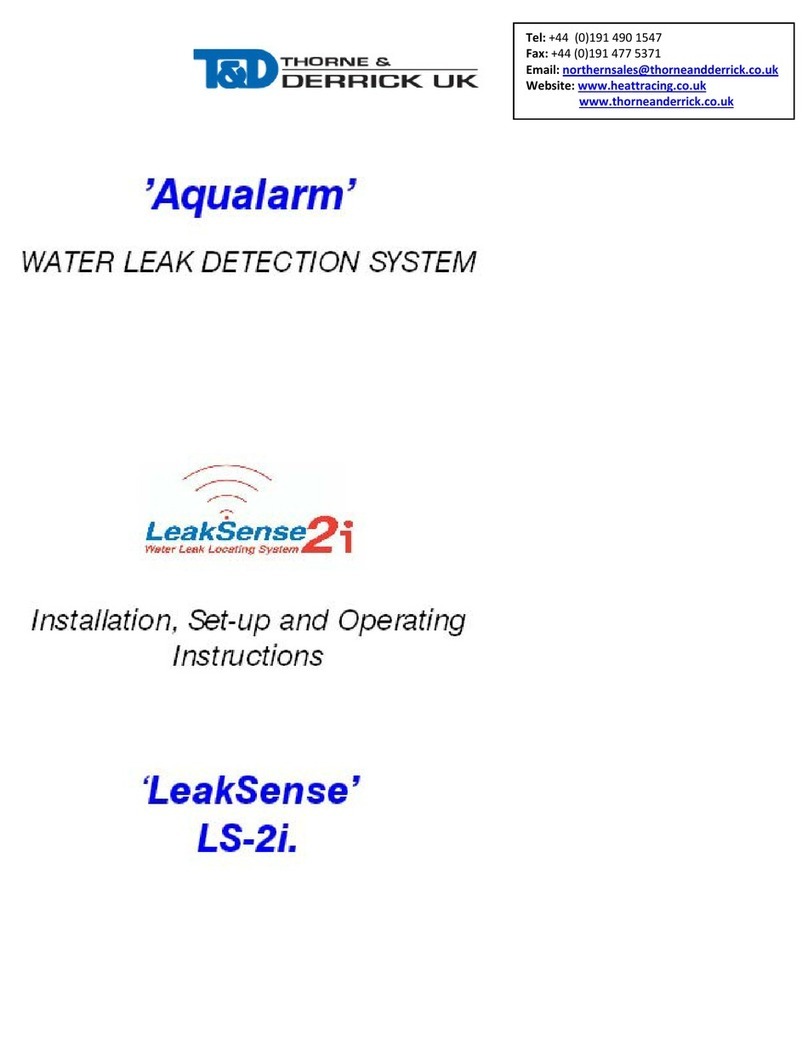
© 2018 United Technologies Corporation 1 / 2 P/N 3102366-EN • REV 003 • ISS 14FEB18
SIGA-HRD Intelligent Fixed-
Temperature and Rate-of-Rise
Heat Detector Installation Sheet
Description
The Signature Series model SIGA-HRD Intelligent Fixed-Temperature
and Rate-of-Rise Heat Detector is an intelligent device that contains a
rate-of-rise and fixed-temperature heat sensor function to detect fire.
The heat sensor monitors the temperature of the surrounding air and
the detector analyzes the data from the sensor to determine whether to
initiate an alarm. The rate-of-rise heat function quickly detects a fast,
flaming fire. The fixed-temperature heat function detects fire when the
air temperature near the detector exceeds the alarm point.
LED indicator. The LED indicator (see Figure 1) displays the following
states:
•Normal: Green LED indicator flashes, no action.
•Alarm/active: Red LED indicator flashes, evacuate the area.
Figure 1: SIGA-HRD features
(1) Self-locking tab
(2) LED indicator
Installation
Notes
•This detector does not operate without electrical power. As fires
frequently cause power interruption, discuss further safeguards
with the local fire protection specialist.
•This detector does not sense fires in areas where heat cannot
reach the detector. Heat from fires in walls, roofs, or on the
opposite side of closed doors may not reach the detector.
•This heat detector by itself does not provide life safety protection.
Use this detector in conjunction with ionization or photoelectric
smoke detectors, or both for life safety situations.
•This detector does not detect oxygen levels, smoke, toxic gases,
or flames. Use this device as part of a broad-based life safety
program which includes a variety of information sources pertaining
to heat and smoke levels, extinguishment systems, visual and
audible devices, and other safety measures.
•Independent studies indicate that heat detectors should only be
used when property protection alone is involved. Never rely on
heat detectors as the sole means of fire protection.
•To ensure proper operation, store the detector within the
recommended ranges. Allow the detector to stabilize to room
temperature before applying power.
•The dust cover (supplied) must remain on the detector during
installation and be removed prior to commissioning and service.
The dust cover is not a substitute for removing the detector during
new construction or heavy remodeling.
•In Canada, install according to CAN/ULC-S524 Standard for the
Installation of Fire Alarm Systems, CSA C22.1 Canadian Electrical
Code, and the local authority having jurisdiction.
To install the detector:
1. Install and wire the base, as described on the installation sheet
supplied with the base.
2. Remove the serial number label from the detector and attach it to
the project documentation.
3. Attach the detector to the base by rotating the detector clockwise
until it snaps into the locked position.
Testing
Before testing, notify the proper authorities that the fire alarm system is
undergoing maintenance and will be temporarily out of service.
Caution: Heat damage. Excessive heat may damage the detector
outer cover. Do not apply excessive heat when using a hair dryer.
When using a Testifire detector tester, you must install a SIGA2
Testifire Adapter Assembly.
Make sure the SIGA2 Testifire Adapter Assembly (model
SIGA2-TSTSPACER) is installed in the Testifire detector tester before
testing. Refer to the SIGA2-TSTSPACER Testifire Adapter Assembly
Installation Sheet (P/N 3101942-ML) for further details.
To perform an initial installation test:
1. Visually inspect each detector and verify that it is installed in the
correct location. Make sure it is not adversely affected by factors
not apparent on the plans.
2. Remove the detector from its base and verify that the proper
detector address, trouble signals, and messages are reported.
3. If wired for Class A operation, verify that the detector continues to
operate first with the SLC_IN disconnected, and then with the
SLC_OUT disconnected. (Refer to the installation sheet for the
base.)
4. Place a momentary ground fault on the SLC circuit to verify
operation of the ground fault detection circuitry.
5. Perform a sensor function test, as described below.
To perform a function test:
1. If desired, use the fire alarm control panel to put the detector or
zone into a service group for testing. (Refer to the panel technical
reference manual for instructions.)
